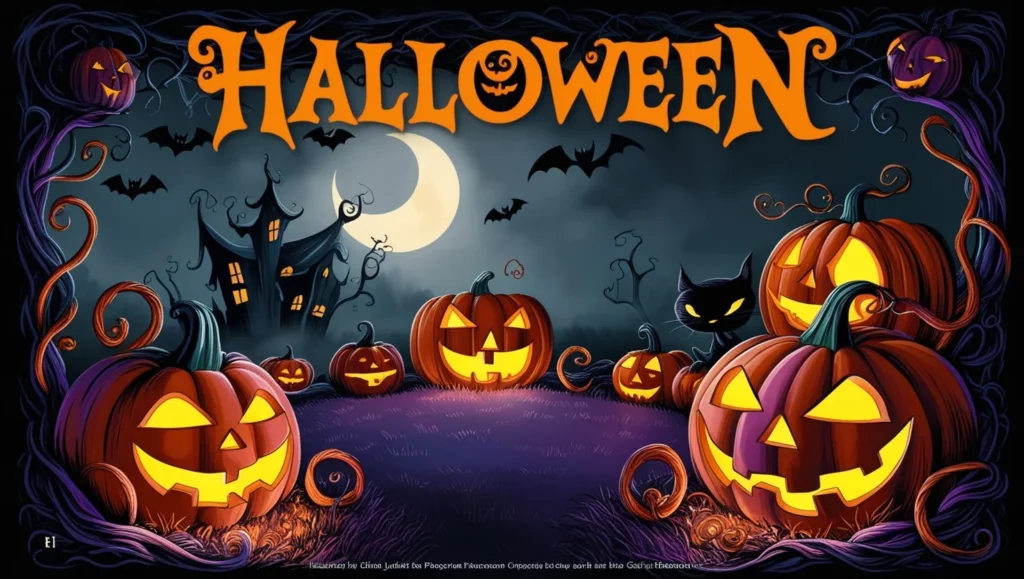Halloween, a night filled with spooky excitement, is one of the most popular celebrations worldwide. But there’s more to this holiday than just dressing up in costumes and trick-or-treating. In this comprehensive guide, we will delve deep into the history, traditions, and celebrations of cute:exodha1rwac= halloween , offering insights that will help you better appreciate this unique and thrilling occasion.
1. The Origins of Halloween
The origins of Halloween can be traced back to the ancient Celtic festival of Samhain, which marked the end of the harvest season and the beginning of winter. The Celts, who lived over 2,000 years ago in what is now Ireland, the United Kingdom, and Northern France, believed that on the night of October 31st, the boundary between the living and the dead became blurred. This belief led to the creation of Samhain, a night when ghosts of the dead were thought to return to earth.
During Samhain, the Celts would light bonfires and wear costumes made of animal skins to ward off wandering spirits. As Christianity spread, the festival evolved, eventually becoming known as All Hallows’ Eve and, later, Halloween.
2. Halloween Traditions: How It Became What It Is Today
Trick-or-Treating
The most iconic Halloween tradition, trick-or-treating, has roots in the medieval practice of “souling.” On All Souls’ Day, the poor would go from house to house, receiving food in exchange for prayers for the dead. This evolved into “guising,” where people dressed in costumes and performed in exchange for treats. By the 20th century, this custom had become the trick-or-treating we know today.
Pumpkin Carving and Jack-o’-Lanterns
Pumpkin carving originated from the ancient practice of carving turnips and placing embers inside to create lanterns that would scare away evil spirits. When Irish immigrants brought this tradition to America, they discovered that pumpkins, native to North America, were easier to carve. Thus, the Jack-o’-Lantern was born, becoming a staple of Halloween celebrations.
Costume Wearing
Wearing costumes dates back to the Celtic tradition of dressing in disguises to fool spirits. Over time, this evolved, with people now choosing to dress as witches, vampires, superheroes, and other popular characters. The variety of costumes reflects the creativity and imagination that Halloween encourages.
Haunted Houses
The tradition of haunted houses emerged in the early 20th century as communities sought to create more elaborate and exciting Halloween experiences. Today, haunted houses range from simple home setups to elaborate, professional productions, providing a thrilling experience for those who enjoy a good scare.
3. Halloween Around the World
While Halloween is most commonly associated with the United States, it’s celebrated in various forms across the globe. Here are a few examples of how different countries put their spin on this spooky holiday:
Mexico – Día de los Muertos (Day of the Dead)
Celebrated from October 31st to November 2nd, the Day of the Dead is a vibrant and colorful festival honoring deceased loved ones. Families create altars (ofrendas) adorned with marigolds, candles, photographs, and food to welcome the spirits of their ancestors.
Ireland and Scotland – Samhain Celebrations
The original birthplace of Halloween, Ireland, and Scotland still celebrate with traditions such as bonfires, games, and storytelling. Many people take part in “bobbing for apples” and other activities that were part of the original Samhain festival.
Japan – Kawasaki Halloween Parade
Japan’s Kawasaki Halloween Parade, one of the largest Halloween celebrations in Asia, attracts over 4,000 participants annually. People of all ages come together to show off their elaborate and often spooky costumes, demonstrating how Halloween has become a global phenomenon.
4. Popular Symbols and Superstitions Associated with Halloween
Black Cats
Black cats are often linked to witchcraft and bad luck, but this association stems from medieval superstitions. During the witch hunts, black cats were believed to be witches’ familiars, or even witches in disguise.
Spiders
Spiders are another popular Halloween symbol, often associated with mystery, death, and the supernatural. Folklore suggests that if you spot a spider on Halloween, it means the spirit of a loved one is watching over you.
Bats
Bats are nocturnal creatures often seen as eerie or ominous. Their connection to Halloween comes from the fact that they were commonly seen near bonfires during the Samhain festival, as the insects attracted to the flames would draw bats to the area.
5. How to Throw the Perfect Halloween Party
Planning a Halloween party requires creativity, preparation, and attention to detail. Here are some tips to help you host a memorable event:
a) Decorations
Transform your home into a spooky setting with cobwebs, Jack-o’-Lanterns, candles, and eerie lighting. Consider using fog machines, skeletons, and themed table settings to add to the atmosphere.
b) Themed Menu
Serve Halloween-themed treats such as witch’s brew punch, spider cupcakes, ghost-shaped cookies, and eyeball pasta. Incorporate seasonal ingredients like pumpkin, cinnamon, and apples to keep your menu festive.
c) Music and Entertainment
Set the mood with a playlist of spooky soundtracks or hire a DJ to play eerie tunes. Consider adding a costume contest, a pumpkin carving station, or a haunted maze to keep guests entertained.
6. Safety Tips for Halloween Night
While Halloween is fun, safety should always be a priority, especially for children who are trick-or-treating. Here are some essential safety tips:
- Wear reflective gear or carry a flashlight to ensure visibility.
- Check all treats before consumption to make sure they are safe and unopened.
- Stick to well-lit areas and avoid houses that don’t have outdoor lights on.
7. The Commercial Impact of Halloween
Halloween is not just about fun and scares; it’s also a multi-billion-dollar industry. From costumes and candy to decorations and haunted attractions, the holiday generates significant revenue. In the United States alone, Halloween spending exceeds $10 billion annually, making it one of the most profitable holidays of the year.
8. Eco-Friendly Halloween Ideas
Given the growing concerns about the environment, many people are looking for ways to celebrate Halloween in a more sustainable way. Here are some tips to help you have an eco-friendly Halloween:
- Reuse or DIY costumes using materials you already have at home.
- Opt for reusable decorations instead of disposable ones.
- Choose natural and organic treats to hand out to trick-or-treaters.
Conclusion
Halloween, with its rich history, traditions, and global appeal, is more than just a night of costumes and candy. It’s a celebration that allows us to embrace our imaginations, connect with our communities, and pay homage to the customs of the past. Whether you’re trick-or-treating, throwing a party, or simply enjoying a scary movie, Halloween offers something for everyone to enjoy.



